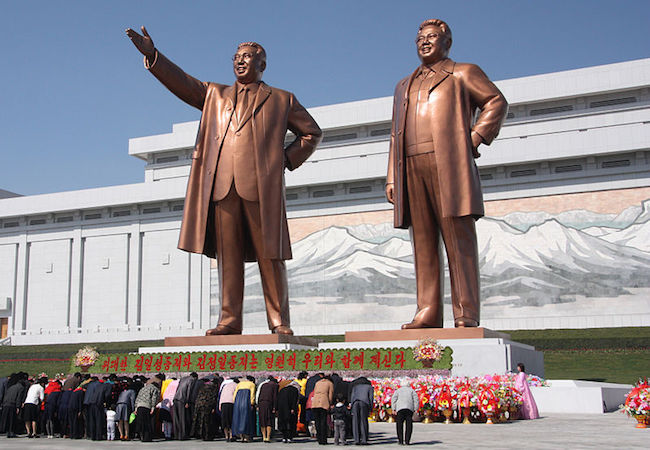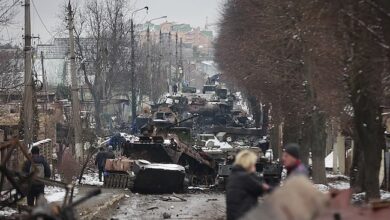
By Maimuna Ashraf
North Korea’s recent detonation of nuclear device, which state proclaimed as successful test of hydrogen bomb, has once again shine the international spotlight on Pakistan’s past proliferation record and alleged dealings with Pyongyang. Pakistan has officially condemned the North Korean nuclear test as it condemned the previously conducted tests. Notwithstanding Pakistan has repeatedly rejected claims of a Pakistan link, stressing that the North Korean state’s bomb was plutonium-based and therefore did not incorporate the uranium technology that the AQ Khan network had been accused previously to deliver to Pyongyang. Yet, even after ten years the Khan’s network has been shut down, few states skip no chance to malign Pakistan by deliberately recalling the past whenever the proposal to treat Pakistan as normal nuclear country surfaces. This practice may bring Pakistan under scrutiny but does not overshadow the failure of non-proliferation regime to prevent states conducting nuclear tests or seeking nuclear technology.
Notwithstanding various instruments, one of the predominant challenges in the contemporary security environment to world peace and security is the spread of nuclear weapons. The Nuclear Non-Proliferation Treaty (NPT), since its ratification, is broadly accepted as world’s most triumphant international arms control accord. Conversely, the proliferation record in the last few decades shows that the international mechanism to combat nuclear proliferation is relatively proving inadequate to handle prevailing challenges as the suspected cases of nuclear proliferation were not deterred or reversed. Consequently, various recent developments have drawn attention to indigenous imperfections and worth of NPT, as several proliferation issues remain unsettled, ineffectively addressed or purposely overlooked.
Almost fifty years after nuclear-armed states pledged under the Nuclear Non-Proliferation Treaty (NPT) to decrease nuclear proliferation, their budgets reflect a steady hike in nuclear spending. It is estimated that collective annual spending on nuclear weapons exceeds one hundred billion dollars. This hike reflects two dominant verities. First, advancement in the nuclear capabilities is rapidly growing and second, the development, deployment, maintenance and modernization of nuclear weapons carries an enormous price tag.
Accordingly, North Korea is not the only problematic state for proliferation regime that is proceeding its nuclear program in self-defense. Rising defense expenditures are a result of security dilemmas faced by several states. This is why despite ongoing global efforts for nuclear non-proliferation, the nuclear costs of two major powers, the U.S. and Russia, will continue to rise even despite the ratification of the New START Treaty agreement. This rise is due to the plans of both states to upgrade and modernize their aging nuclear arsenals, missiles and submarines. Obama’s proposed budget for fiscal 2016 amounts to $585.3 billion and the nuclear budget seeks 8% more than the last financial year. The United States (US) estimated cost on nuclear weapons and related expenditures is $56 billion annually. According to the report by the National Defense Panel Review, the US will spend between $872 billion to $1 trillion over the next 3 decades. Developments in the US have reportedly coerced Russia to an historic rise of 33% (more than $50 billion) in military spending. Russia is also planning to grind out a new generation of submarines and rockets to keep parity with the US. China also announced a hike of 10% in its defense budget for FY 2015-16, the second highest in the world after the US. Although these three states are facing affordability issues in maintaining and modernizing, nuclear budgets are no longer tied to the economic position of states but rather tied to politics. Nuclear weapons have been established and accepted as a credible deterrence; thus making nuclear budgets untouchable regardless of resource constraints.
South Asia is significant for its unprecedented nuclear build-up between two nuclear rivals. South Asian regional nuclear politics and policies are defined by the behavior of three states; China, India and Pakistan. Pakistan’s nuclear posture is India centric and Indian nuclear posture is believed to be mainly directed against China and nominally against Pakistan. The last insignificant hike in the Indian budget is significant for several reasons. The most important reason is, this rise will not be enough to narrow the military gap with China especially with declared forays into the Indian Ocean but enough to uphold asymmetry with Pakistan. The limited hikes validates Indian nuclear developments primarily focused on Pakistan and not China because nuclear weapons plus the acquisition of warships, fighter planes and submarines is not possible at once with this defense allocation. The fact that India’s prime threat is focused on Pakistan will compel Pakistan to increase its defense spending and nuclear dependency regardless of monetary constraints.
It is naïve, if nuclear weapon states (NWS) demand that other states roll-back or shrink their nuclear size while they are growing their own. It is time to address the real issues if the non-proliferation regime is seriously concerned about North Korea and proliferations risks, rather than repeatedly recalling Pakistan’s past, which will not resolve the problem and for which Pakistan has paid enough cost.




